Steamed eggs, also known as steamed egg custard or simply “zheng dan” in Chinese cuisine, are a delicate and comforting dish that can be enjoyed at any time of the day. Their soft, silky texture and mild flavor make them a favorite among many, but achieving the perfect consistency can be a challenge for even the most seasoned cooks. In this article, we will delve into the intricacies of how to steam eggs, uncovering the secrets and techniques that guarantee a flawless result every time.
Understanding the Basics
Before diving into the specifics, it’s crucial to grasp the fundamental principles behind steaming eggs. Steaming is a cooking method that involves using the steam generated from boiling water to cook food. In the case of eggs, this gentle heat is essential for creating a tender, smooth texture without overcooking or drying out the mixture.
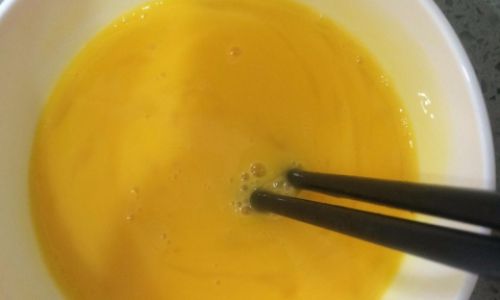
The key ingredients are simple: eggs, water or milk (optional), salt, and sometimes a touch of soy sauce or sesame oil for flavor. However, it’s the ratio of eggs to liquid and the steaming process that can make or break the dish.
Perfect Ratio and Mixing Technique
-
Egg to Liquid Ratio: The most common ratio for steamed eggs is 2:1 (two parts eggs to one part liquid). This ratio provides a balance between firmness and creaminess. For a richer flavor and smoother texture, some recipes call for a blend of water and milk or cream, typically in a 1:1 ratio for the liquid component.
-
Mixing: When mixing the eggs and liquid, it’s important to do so gently to avoid incorporating too many air bubbles. Use a chopsticks or a whisk to gently stir the mixture until just combined. For an even smoother texture, you can strain the mixture through a fine-mesh sieve to remove any lumps and additional air bubbles.
Seasoning and Flavor Enhancements
While basic steamed eggs are delicious on their own, a few simple additions can elevate the dish to new heights:
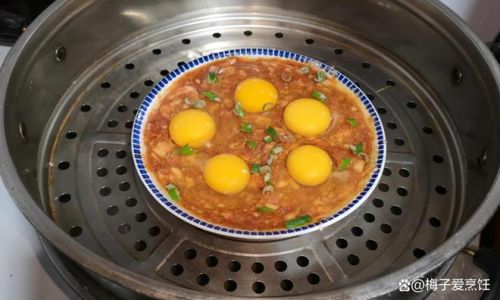
- Salt: A pinch of salt not only enhances the flavor but also helps the eggs coagulate more evenly.
- Soy Sauce: A drizzle of light soy sauce can add depth without overpowering the delicate taste of the eggs.
- Sesame Oil: A few drops of sesame oil can provide a nutty aroma and a subtle richness.
- Green Onions or Scallions: Finely chopped green onions sprinkled on top add a fresh, slightly sweet flavor and a pop of color.
- Dashi or Chicken Stock: For a more sophisticated touch, replacing some of the water with dashi or chicken stock can infuse the eggs with additional layers of flavor.
Preparing the Steaming Dish
The container you use for steaming is equally important. Here are some tips:
- Shallow Dish: Use a shallow, wide dish rather than a deep one. This ensures that the eggs cook evenly from the bottom to the top.
- Greasing: Lightly grease the dish with oil to prevent the eggs from sticking.
- Covering: Cover the dish with a lid or aluminum foil to trap steam and create a uniform cooking environment. Make sure to poke a few small holes in the foil to allow steam to penetrate.
The Steaming Process
Now, let’s get to the heart of the matter – the steaming itself.
-
Boiling Water: Fill a steamer or a large pot with water and bring it to a rolling boil. The water should be hot enough to generate continuous, vigorous steam.
-
Placing the Dish: Carefully place the prepared dish of egg mixture into the steamer basket or on a rack above the boiling water. Ensure that the water level does not touch the bottom of the dish to prevent water from diluting the mixture.

-
Timing: The cooking time depends on the desired consistency and the quantity of eggs being steamed. For a standard batch using the 2:1 ratio, steaming for about 7-10 minutes usually yields perfectly tender eggs. Start with 7 minutes and adjust based on your preference for firmness.
-
Checking for Doneness: Use a toothpick or a chopstick to gently pierce the center of the eggs. If the mixture is set but still slightly jiggly, it’s ready. Overcooking will result in dry, rubbery eggs, so it’s better to err on the side of caution and check early.
Cooling and Serving
Once the eggs are done, resist the urge to open the steamer immediately. Allow them to sit in the steamer with the heat turned off for a couple of minutes. This helps them firm up slightly without overcooking.
Carefully remove the dish from the steamer and let it cool slightly before serving. Garnish with chopped green onions, a drizzle of soy sauce, and a touch of sesame oil. For an added touch of elegance, you can create a light sauce with soy sauce, a splash of rice vinegar, and a pinch of sugar, then drizzle it over the top.
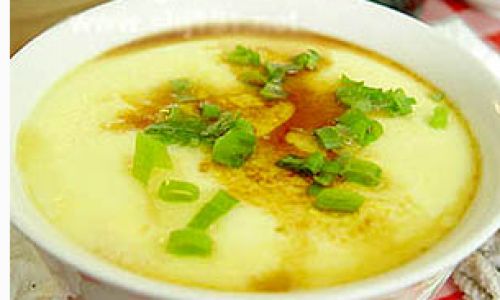
Troubleshooting Common Issues
- Lumpy Texture: Ensure you strain the egg mixture to remove lumps and air bubbles.
- Watery Eggs: This often happens due to too much liquid or undercooking. Adjust the ratio and cooking time accordingly.
- Tough Texture: Overcooking is the culprit here. Use a timer and check for doneness early.
- Condensation: To avoid water droplets from the lid falling onto the eggs and creating unsightly marks, place a kitchen towel or parchment paper between the lid and the steaming dish.
Conclusion
Steamed eggs may seem like a simple dish, but mastering the art of preparing them flawlessly requires attention to detail and a bit of practice. By following the tips and techniques outlined in this article, you’ll be able to create silky, smooth steamed eggs that are sure to impress even the most discerning palate. Whether you’re enjoying them as a light breakfast, a comforting snack, or a delicate side dish, the perfect steamed eggs are always a welcome addition to the table. Happy steaming!



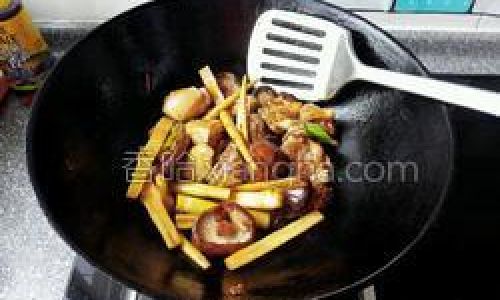
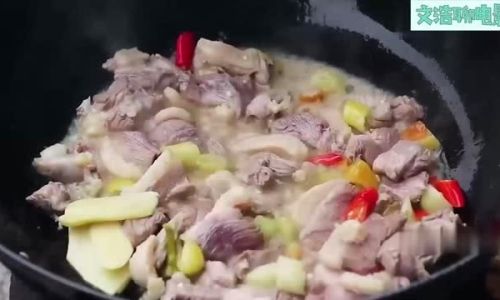
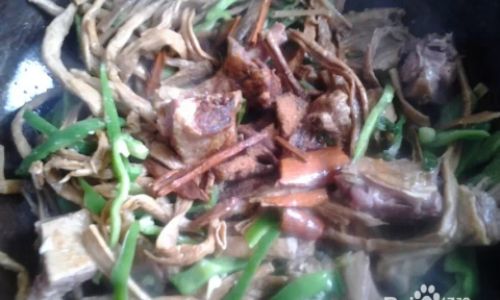
0 comments